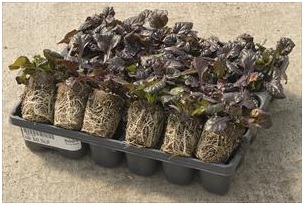Shop by Category
Shop by Brand
Shop by Brand
Ajuga
Ground-Hugging Beauty with Vibrant Blooms
Transform your garden with the resilient and beautiful Ajuga, also known as Bugleweed. This low-growing, evergreen perennial is a champion ground cover, perfect for filling shady areas, suppressing weeds, and adding a splash of color with its vibrant foliage and spring blooms. Ajuga's adaptability and low-maintenance nature make it a favorite among gardeners of all levels.
- Excellent Ground Cover: Forms a dense mat, suppressing weeds and filling in bare spots.
- Shade Tolerant: Thrives in partial to full shade, making it ideal for under trees and in shady borders.
- Vibrant Foliage: Offers a range of leaf colors, from deep purples and bronzes to variegated greens.
- Spring Blooms: Produces upright spikes of blue, purple, pink, or white flowers.
- Low Maintenance: Requires minimal care once established.
- Evergreen in Many Climates: Provides year-round color and texture.
- Attracts Pollinators: Flowers attract bees and butterflies.
Optimal Conditions:
- Soil: Prefers moist, well-drained soil. Tolerates a range of soil types, including clay.
- Sunlight: Partial to full shade is ideal. Some varieties can tolerate more sun if given adequate moisture.
- Hardiness: Typically, hardy in USDA zones 3-9, depending on the variety.
- Spacing: Space plants 6-12 inches apart, depending on the variety and desired coverage.
- Planting Depth: Plant at the same depth as the container it came in.
- Watering at planting: Water thoroughly after planting and until established.
Care Tips:
- Watering: Water regularly during the first growing season to establish a strong root system. Once established, Ajuga is relatively drought-tolerant but prefers consistent moisture.
- Fertilizing: Ajuga generally does not require heavy fertilization. A light application of balanced fertilizer in spring can be beneficial.
- Deadheading: Remove spent flower spikes to maintain a tidy appearance and prevent self-seeding (unless you wish to collect seeds).
- Division: Divide established clumps every 2-3 years in spring or fall to rejuvenate plants and prevent overcrowding.
- Controlling Spread: Ajuga can spread aggressively through runners. Consider using edging or planting in containers to control its spread.
Key Features Summary:
- Excellent ground cover for shade.
- Vibrant foliage colors.
- Spring blooms attract pollinators.
- Low maintenance and easy care.
- Evergreen in many climates.
- Suppresses weeds effectively.

Ajuga (Bugleweed) is a low-maintenance ground cover that thrives in sun or shade and is adaptable to various soil conditions. Its dense mat of foliage makes it an excellent choice for erosion control and weed suppression. In spring, Ajuga bursts with colorful spikes of blue, pink, or white flowers.
